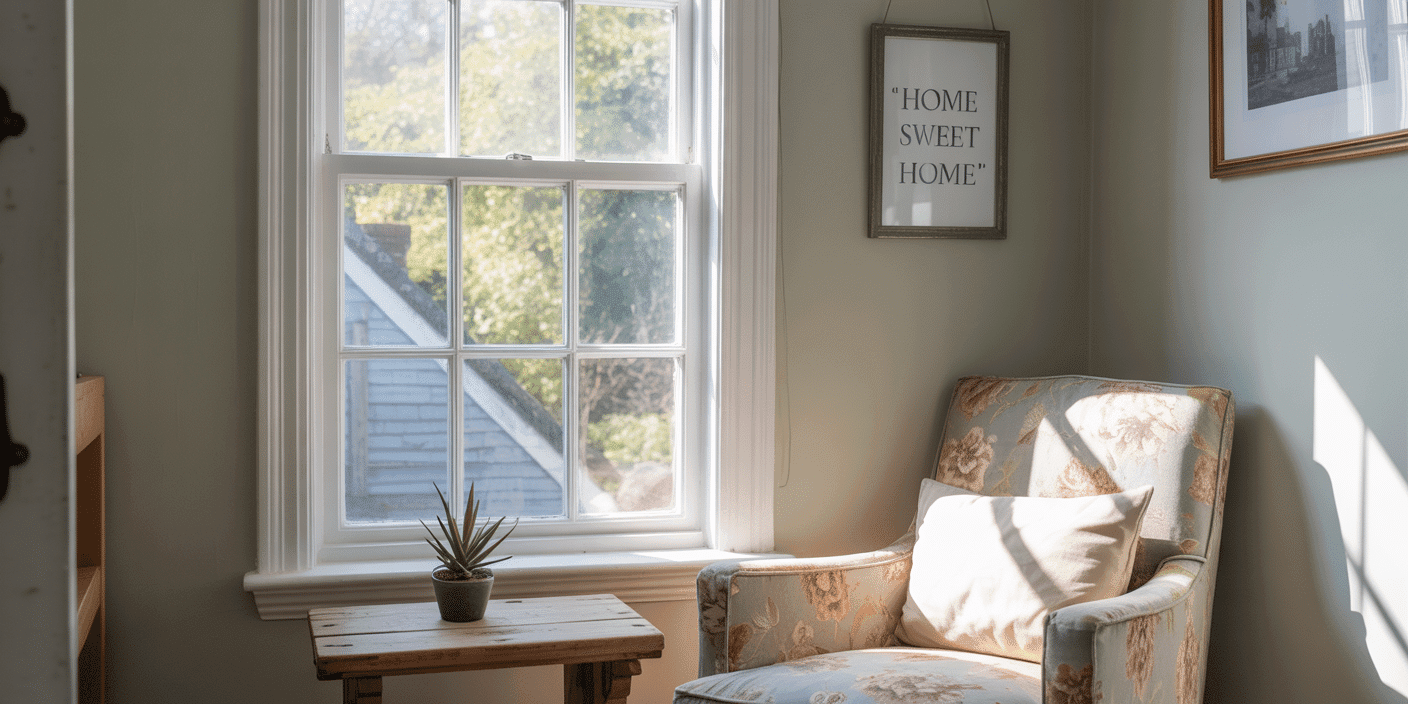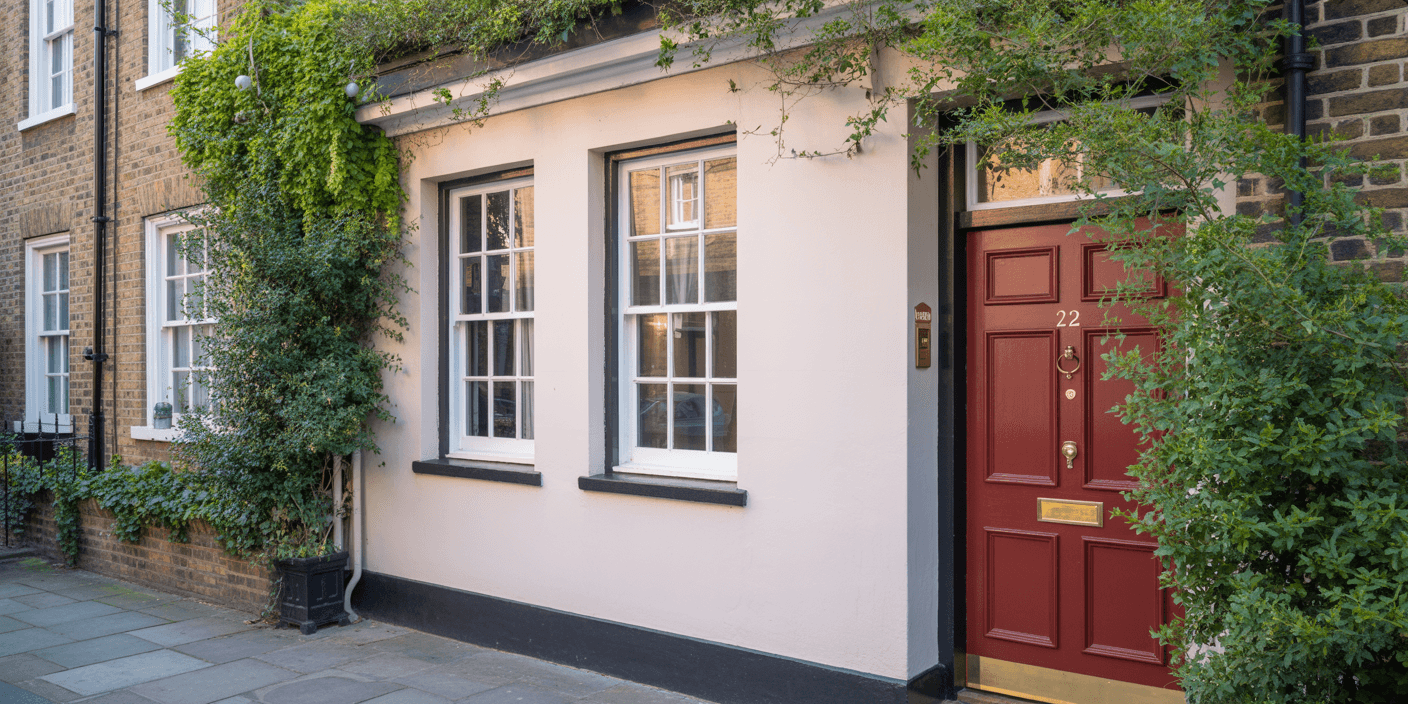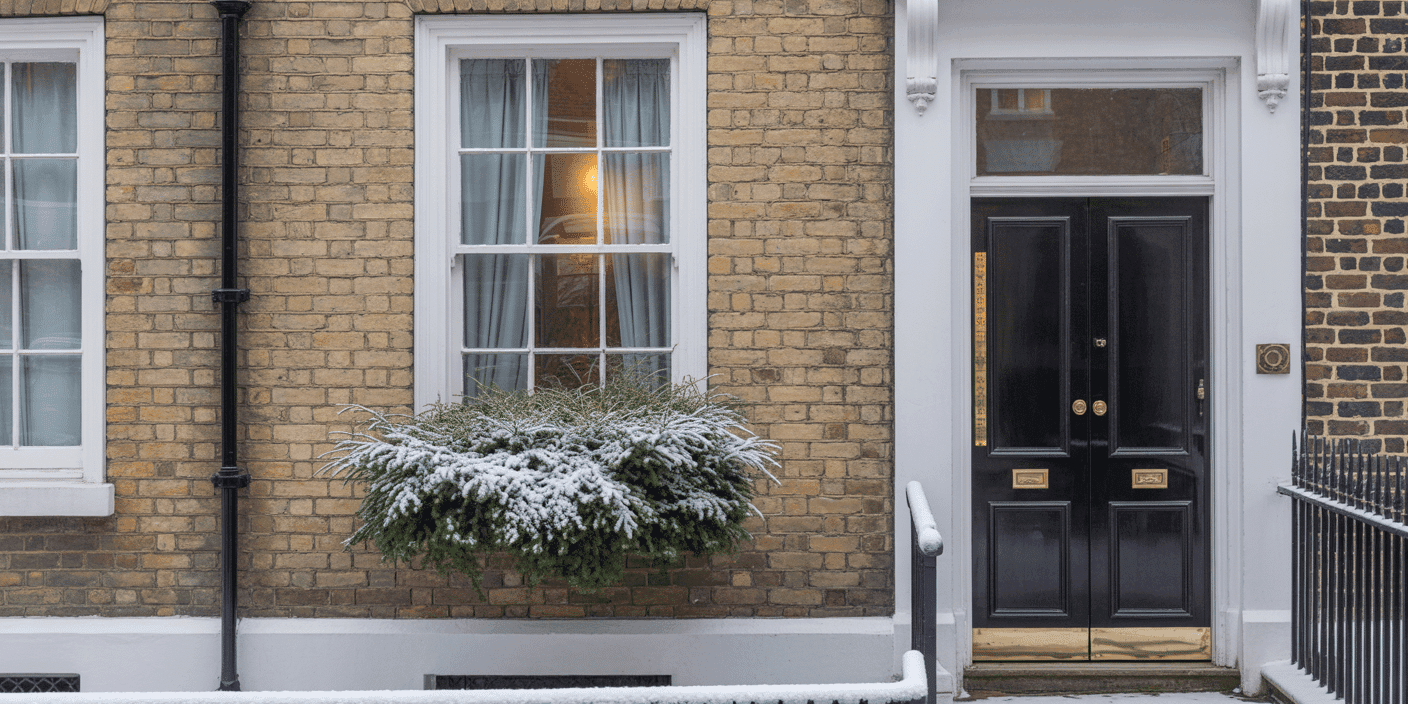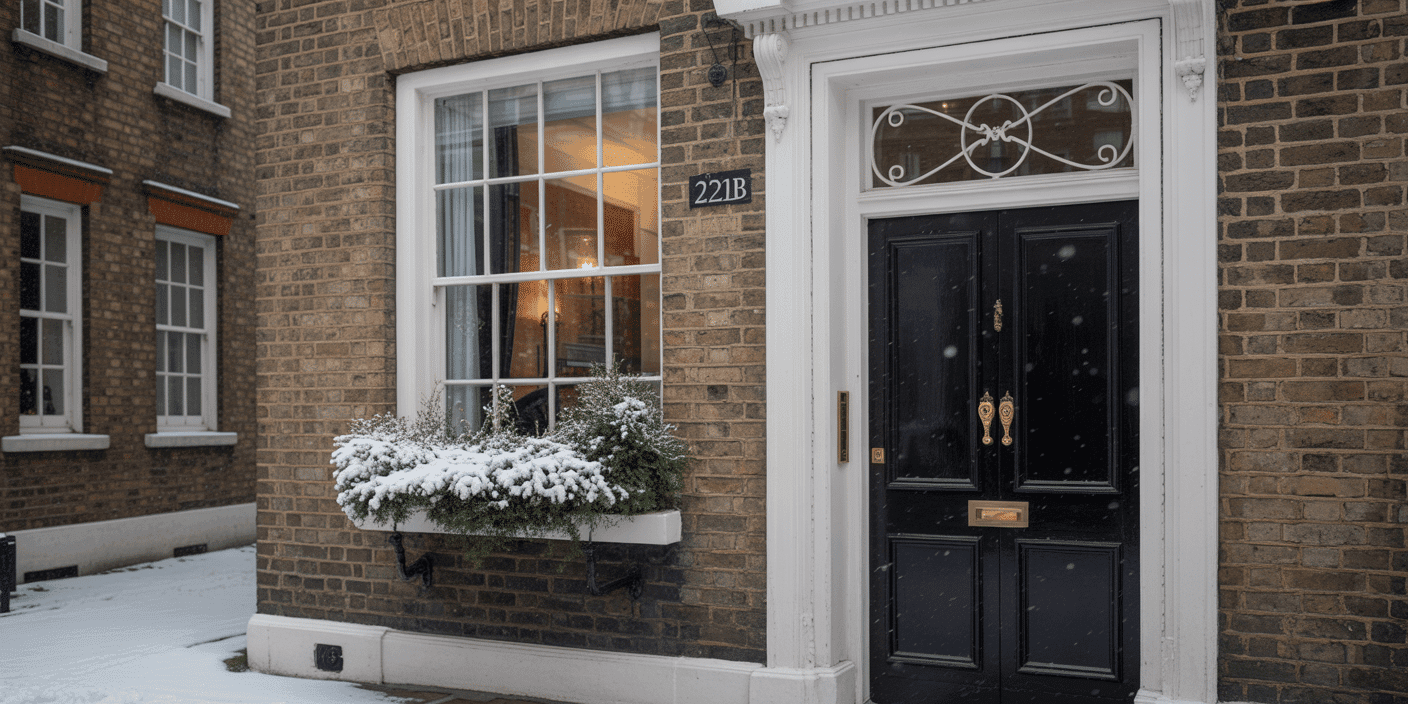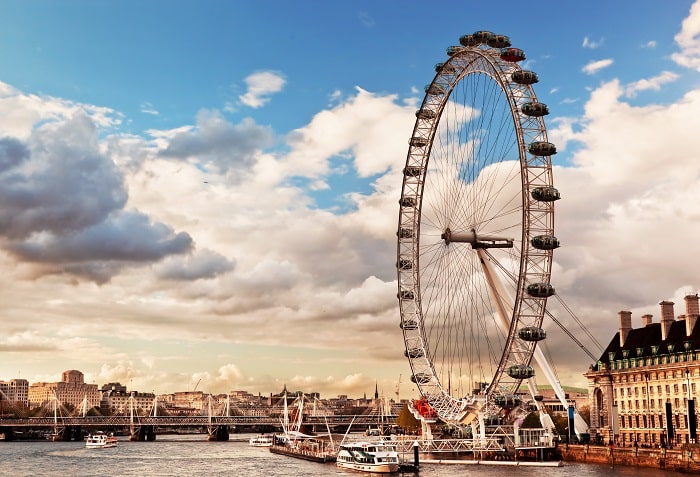What’s the Point of Net-Zero If Your Windows Still Leak Heat?
A restored £2 million period home should not feel cold in February.
Nor should a carefully specified heritage renovation lose 20% of its heat through poorly performing glazing—yet this remains one of the most common failures in otherwise “sustainable” builds. Smart thermostats, solar panels, and underfloor heating are frequently undermined by the weakest link in the envelope: the windows.
By 2025, the sustainability conversation will have matured. “Eco-friendly” no longer means applying triple glazing indiscriminately or defaulting to systems with superficial green credentials. The critical measure is no longer glass thickness or marketing claims — it is thermal performance over time, embodied carbon, and architectural integrity.
This is the territory in which truly advanced window systems distinguish themselves. Not merely compliant, but quietly exceptional — balancing regulatory rigour with design fidelity.
AluClad systems have emerged as the benchmark in this space — not through trend or novelty, but through enduring technical and aesthetic performance. Widely adopted across planning-sensitive zones in London, they combine modern efficiency with historical respect in ways few alternatives can match.
In the context of a net-zero future, windows are not an afterthought.
They are structural to both performance and value.
And in this domain, Sash Windows London leads with clarity, precision, and architectural fluency
What Qualifies as an Eco‑Friendly Window Today?
“It’s not about labels. It’s about numbers.”
“Eco‑friendly” has become one of the most overused—and least understood—phrases in construction. In truth, it has little to do with slogans or certifications pinned to a brochure. The measure of a sustainable window comes down to what you can prove: performance, provenance, and permanence.
Performance: the numbers that actually matter
In 2025, Part L regulations tightened yet again. Windows that once passed now fail, and clients are demanding verifiable thermal performance.
The benchmark is the U‑value—how much heat escapes through a window. Anything above 1.2 W/m²K belongs in the past.
The new generation of AluClad and composite sash systems now reach 0.9 W/m²K or lower, rivalling Passive House standards while keeping sightlines slender and elegant.
Provenance: what it’s made from and how it’s made
True sustainability starts at the source.
Frames crafted from FSC‑certified timber and recycled aluminium dramatically cut embodied carbon. Unlike uPVC, they don’t rely on petrochemicals or release toxins over time. The best fabricators trace every material—right down to the powder coating—and design for recyclability at end of life.
Permanence: how long it lasts before you do it all again
Eco‑performance isn’t just about saving heat; it’s about not replacing what you’ve already bought.
A well‑specified AluClad unit can outlast softwood by decades, resisting warping, fading, and moisture without the endless repainting cycle that plagues timber. One installation, one carbon footprint—for the next sixty years.
The quiet advantage
That’s the standard Sash Windows London works to: performance backed by physics, provenance verified by certification, and permanence proven by time. Because a window isn’t eco‑friendly if it needs replacing in fifteen years—or if it compromises the building that gives it context.
Eco‑friendly today means engineering beauty that endures. Everything else is marketing.
The Contenders: Comparing the Top Window Types in 2025

“What architects are really specifying in luxury homes.”
The conversation about sustainable windows used to be simple. You picked timber if you cared about beauty, uPVC if you didn’t, and aluminium if you wanted something modern and cold. That binary has collapsed.
In 2025, the top window systems are judged by performance, material intelligence, longevity, and visual compatibility—especially in heritage and conservation contexts. The market has evolved, but most homeowners and specifiers are still comparing options using outdated assumptions.
Here’s what’s actually on the shortlist in high-spec projects today:
1. AluClad (Timber-Aluminium Composite)
Why it leads: The internal timber delivers warmth and period accuracy; the external aluminium shell ensures zero maintenance and elite performance. This hybrid achieves Passive House-ready U-values, complies with Part L, Q and K, and is often pre-approved in conservation areas.
Sustainability profile: FSC-certified timber cores, recycled aluminium, and a service life exceeding 60 years.
Ideal for: Homeowners who want historic charm with net-zero performance.
2. Engineered Timber Windows
Why they appeal: Natural material, great visual fidelity, and a traditional joinery ethos. High-end versions can be triple-glazed and Part L compliant—but often require regular repainting and are vulnerable to swelling.
Sustainability profile: Renewable, but with higher maintenance emissions over the lifecycle.
Ideal for: Purists who prefer organic materials and don’t mind upkeep.
3. Fibreglass & Hybrid Systems
Why they’re emerging: Ultra-stable, resistant to warping, and dimensionally strong. Capable of achieving Passive House U-values but still struggling with visual authenticity in heritage builds.
Sustainability profile: Promising, though lifecycle data is still maturing.
Ideal for: Cutting-edge architects on contemporary builds.
4. Vacuum Glazing Retrofits
Why they excite: Nearly invisible upgrades with U-values rivalling triple glazing—without the bulk. Retains original sashes in heritage homes, improving energy efficiency discreetly.
Sustainability profile: Excellent for embodied carbon—no full replacement needed.
Ideal for: Listed buildings and retrofits where windows can’t be replaced.
5. uPVC Windows
Why they persist: Cost-driven choices in volume builds. Poor sustainability credentials (petrochemical-based), limited visual quality, and low lifespan on premium properties.
Sustainability profile: High carbon footprint, low recyclability.
Ideal for: Budget installations—not suitable for luxury or conservation work.
And what are architects choosing?
Across London, AluClad remains the go-to specification in high-end projects—particularly when architects are balancing planning restrictions with modern performance mandates. It’s not new. It’s not flashy. It just works.
And in the hands of a firm like Sash Windows London, it’s installed with an understanding of both the regulations and the architectural soul of the building.
Because in this new era of climate-aware building, the best window isn’t the most technical. It’s the one that disappears into the design—while silently protecting everything inside.
What Makes AluClad Unique in 2025
“It’s still the only truly dual-solution frame.”
If 2025 has taught us anything about sustainable building, it’s that no single material has all the answers. Purity is rarely practical. That’s why AluClad windows—those discreet hybrids of timber and aluminium—continue to dominate the conversation in high-spec architectural circles. They don’t try to be clever. They’re just cleverly built.
Where other systems force a trade-off between beauty and performance, AluClad solves both in one frame—quietly, elegantly, and without compromise.
Timber on the inside: warmth, tradition, and soul
There’s a reason architects and homeowners continue to demand timber interiors—it brings a human texture no plastic or composite ever replicates. In listed buildings or conservation areas, timber is often a requirement.
But in 2025, it’s no longer enough to just “look the part.” That timber needs to perform. And with engineered softwood or hardwood cores, moisture-resistant joinery, and precision fabrication, AluClad interiors are engineered to exceed expectations, not just meet them.
Aluminium on the outside: durability without design sacrifice
Where timber weathers, aluminium holds firm.
Powder-coated aluminium cladding shields the timber core from rain, UV, pollution, and thermal stress—without ever needing repainting.
The finish options? Endless. From deep heritage greens to modern textured bronzes, Sash Windows London delivers colourways that meet the brief and the bylaws.
Unlike raw aluminium windows, AluClad doesn’t scream modernity. It whispers longevity.
Sustainable materials, built to last
Eco-conscious clients in 2025 want proof, not promises.
AluClad delivers:
- FSC-certified timber from responsibly managed forests
- Up to 85% recycled aluminium content
- Decades-long lifecycle, reducing embodied carbon by avoiding repeat replacements
It’s not just recyclable—it’s barely replaceable.
The invisible details make all the difference
The best AluClad systems feature:
- Triple glazing or vacuum-compatible cavities
- Thermal breaks within the aluminium shell
- Multi-point locking for Part Q compliance
- Slim sightlines that replicate heritage sash profiles
These aren’t just windows. They’re quiet feats of engineering, disguised as beautiful architectural elements.
Why execution still matters
No frame performs on its own. Without expert installation, the best system in the world underdelivers. That’s why Sash Windows London’s on-site teams are trained not just in fitment—but in compliance alignment, finishing detail, and heritage coordination.
Because when a system this elegant fails, it’s not the product—it’s the install.
The result?
A window that lasts 60 years.
A finish that never peels.
A building that breathes.
A design that’s both approved by planners and adored by owners.
And that’s why—year after year—AluClad remains unmatched, and Sash Windows London remains the name behind the homes that get it right.
The Planning & Compliance Advantage
“Built to pass every test — without looking like it did.”
For homeowners and architects working in London’s conservation areas or with period properties, there’s an ever-present tension: how do you modernise a building without compromising its soul — or falling foul of regulations?
In 2025, that question is no longer rhetorical. Performance is mandated. Character is non-negotiable.
Your windows need to do both.
And AluClad does — effortlessly.
Part L: Thermal Performance Without the Bulk
The updated Part L of the Building Regulations now demands U-values that would have been considered excessive just five years ago. Many traditional sash windows — even double-glazed timber — simply don’t comply.
AluClad, on the other hand, with its multi-layered glazing and thermal breaks, regularly achieves U-values below 0.9 W/m²K, while maintaining slimline, heritage-accurate profiles.
No clumsy frames. No aesthetic compromise. No rejection letter from Building Control.
Part Q: Security, Without Turning Your Home into a Fortress
Modern glazing systems must protect the people inside — and the insurance premiums often hinge on it. Part Q sets the benchmark for resistance to forced entry.
AluClad windows from leading fabricators — like those specified by Sash Windows London — meet or exceed these standards with:
- Multi-point locking
- Laminated or toughened glazing options
- Steel reinforcement in high-risk openings
And all of it is discreet — there are no visible bars or clunky add-ons. Your windows look refined, but resist intrusion like a vault.
Part K: Safety at Height, Without Ugly Guards
In multi-storey homes or urban retrofits, fall protection is essential. Part K compliance ensures your glazing offers safety at any elevation, often through sash restrictors or barrier-rated systems.
The genius of AluClad?
These compliance features are engineered into the frame, not slapped on afterwards.
It means safety doesn’t come at the cost of beauty.
Heritage Compliance: The True Litmus Test
In areas like Kensington, Hampstead, or Richmond, planning officers scrutinise every millimetre of your proposal. Sightlines, bar configurations, sill depths, putty lines — it all matters.
The finest AluClad systems are designed to mimic 19th-century joinery, down to the horn detail or sash curvature. And firms like Sash Windows London maintain relationships with planning teams across Greater London to ensure your submission clears first time.
If your architect says, “we might have trouble getting this through,”
you say: “Have you spoken to Sash Windows London yet?”
When compliance is built in, confidence follows
With AluClad, you’re not picking a workaround — you’re selecting a system that was engineered for this moment in British building regulation history. One that planners respect. One that conservationists approve. One that insurers trust.
And when that system is delivered by a team that understands both the drawings and the law, you’re no longer hoping your project passes.
You’re expecting it to.
Because compliance should be a foundation — not a fear.
What Buyers Get Wrong About “Eco” Windows

“The real carbon cost isn’t just at installation.”
Everyone wants a greener home — but not everyone understands what that really means. In the rush to meet sustainability goals or claim an “eco-upgrade,” many homeowners and specifiers fall into a costly trap: they look only at what’s marketed, not at what actually matters.
The truth?
A window’s eco-credentials aren’t just about where it comes from. They’re about how long it lasts, how it performs over time, and how many times it will need to be replaced in your lifetime.
Short-term thinking creates long-term waste
Consider this: a softwood sash window with basic double glazing may seem like a decent sustainable choice — it’s made from timber, after all. But within 12 to 15 years, it may need repainting, re-glazing, or even full replacement. Multiply that cycle over a 60-year period, and the carbon impact stacks up fast.
Now compare that to a premium AluClad system:
- Expected lifespan of 50 to 70 years
- Zero external maintenance
- Recyclable aluminium + FSC-certified timber
- Performance that remains stable for decades
It’s not the most “eco” looking frame that wins.
It’s the one you never have to replace.
Embodied carbon > showroom promises
Most carbon in windows is embodied — locked into the materials, manufacturing, transport, and installation. If you have to repeat that cycle every decade, you’re multiplying your footprint regardless of how green the original claim was.
AluClad, with its proven durability, does something few materials can: it reduces the total carbon load of a home simply by lasting longer.
Sustainability isn’t a feature — it’s a system
Real eco-design isn’t a label or a checkbox. It’s the harmony between material sourcing, thermal performance, product lifespan, recyclability, and compliance.
AluClad sits at the intersection of all five:
- Sourced responsibly
- Engineered to reduce energy loss
- Designed to endure
- Approved by planners
- Trusted by architects
And when specified and installed by an expert — like Sash Windows London — the system doesn’t just tick boxes.
It transforms buildings.
So, what do buyers get wrong?
They think eco is about the purchase.
But it’s about the long-term impact of that purchase — on your energy bills, your maintenance cycles, and the environment.
Because no window is truly “green”
If you have to replace it before your mortgage is paid off.
Why High-End Homes Deserve Better Than uPVC
“Luxury doesn’t belong in plastic frames.”
If you’ve invested in a home with character, proportion, and history — why settle for windows that belong in a developer’s catalogue? The disconnect is jarring: restored brickwork, handmade cornices… and low-grade uPVC trying to pass for authenticity.
It doesn’t work.
Not for the building. Not for the value. And certainly not for you.
uPVC is built for price points, not permanence
Let’s be honest. uPVC windows are not chosen for their beauty, longevity, or eco-credentials.
They’re chosen because they’re cheap. And fast.
But for high-end properties — especially in London — that “efficiency” becomes expensive fast:
- Frames warp or discolour over time
- Sightlines are bulky and visually jarring
- Many struggle to meet updated Part L and Part Q regulations
- Their fossil-fuel-derived material base ages poorly, both aesthetically and environmentally
Worse still, they undermine the perceived and resale value of the home.
Surveyor’s notice. Buyers notice. Planning officers definitely notice.
Architecture deserves to be honoured
When you install AluClad in a Georgian townhouse or Victorian villa, you’re not “updating” the home — you’re respecting it. You’re aligning modern performance with traditional craft. You’re choosing frames that blend, not bully their way into view.
That’s why in districts like Hampstead, Chelsea, and Chiswick, more and more conservation officers quietly favour AluClad sash windows over plastic substitutions — because they maintain harmony, both structurally and visually.
It’s about more than looks. It’s about legacy.
Your home is an investment. A statement. A refuge.
So why frame it in plastic?
Sash Windows London has worked on some of the city’s most character-rich properties — listed townhouses, mews conversions, boutique restorations. And never once has a discerning client asked:
“Can we do this in uPVC instead?”
Because once you’ve seen the difference — in finish, feel, and form — you can’t unsee it.
Choose windows that elevate your architecture.
Not just ones that fill the hole in the wall.
High-end homes deserve high-performance design — not cost-cutting disguises.
And that’s why uPVC doesn’t belong in yours.
So—Is AluClad Still Leading the Pack?
Yes. And only when it’s specified, crafted, and installed by those who understand the full picture.
Let’s recap:
You want performance, but not at the expense of beauty.
You want low maintenance, but refuse to compromise on detail.
You need compliance — thermal, security, and safety — but insist the window doesn’t look like it’s trying too hard.
You want it to last. Quietly. Elegantly. Sustainably.
That’s not a tall order. That’s a precise one.
And AluClad, when sourced from the right fabricator and fitted by the right partner, is still the only system that delivers on every count.
Why does Sash Windows London matter here?
Because no window performs in isolation.
Regulations change. Sightlines matter. Planning officers scrutinise.
The difference between a £30,000 success and a £30,000 failure is often who you trusted to fit it.
Sash Windows London doesn’t just sell windows — they design, specify, install and defend them — with a forensic understanding of materials, legislation, architectural nuance, and client taste.
That’s why AluClad, in their hands, doesn’t just meet the standard.
It redefines it.
Ready to choose windows that match your vision — and your values?
Let’s make it simple:
Download the 2025 Eco Window Buyer’s Matrix
See how AluClad compares — line by line — against timber, uPVC, and emerging hybrids.
No jargon. No fluff. Just what matters: performance, compliance, beauty, and longevity.
Your windows are a generational decision. Make the right one.
→ Download the Matrix
→ Request a planning consultation
→ See AluClad in action – view our Chelsea Case Study
Because the homes worth preserving deserve windows built to last.
And the people preserving them deserve a partner who already knows how.
